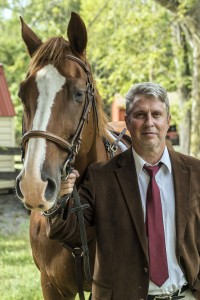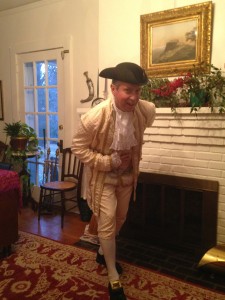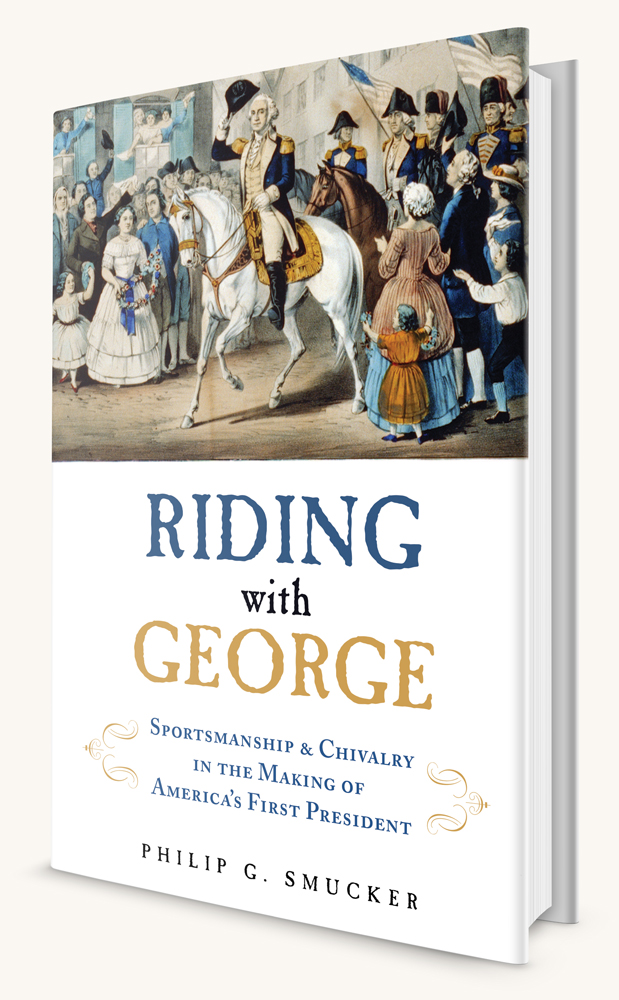 As we celebrate the Fourth of July this week, there is no better time to reflect on the courageous Founding Fathers and the first president of our nation, George Washington. Long before George Washington was a president or a general, he was a sportsman. His horseback riding abilities and prowess were legendary in his time, and he excelled in nearly every kind of action he performed, including dancing, throwing, fencing, fishing and even card playing. Using his talents and ambitions—and the centuries-old British idea of sport—to propel him into positions of leadership and influence, Washington eventually became the model of sportsmanship and manners for a new and highly competitive country.
As we celebrate the Fourth of July this week, there is no better time to reflect on the courageous Founding Fathers and the first president of our nation, George Washington. Long before George Washington was a president or a general, he was a sportsman. His horseback riding abilities and prowess were legendary in his time, and he excelled in nearly every kind of action he performed, including dancing, throwing, fencing, fishing and even card playing. Using his talents and ambitions—and the centuries-old British idea of sport—to propel him into positions of leadership and influence, Washington eventually became the model of sportsmanship and manners for a new and highly competitive country.
A fresh perspective on Washington’s ascent through prowess and savvy, Riding with George: Sportsmanship & Chivalry in the Making of America’s First President by Philip G. Smucker presents Washington as an advocate for sound competition, honor, fair play and impeccable manners. Philip Smucker, the fifth-great-grandnephew of George Washington, argues that Washington had an innate sense of honor and duty, making him a respectable and fearless leader. Philip answers our questions about his fantastic new book below.
You, like George Washington, are an equestrian. What else do you have in common with your fifth-great-granduncle?
Frankly, I have almost nothing in common with my fifth great Uncle George, apart from maybe the outlines of a nose that was broken in a bar fight years ago. I’m also not really much of an equestrian, though I have ridden across several continents and enjoy seeing the world from a saddle. I think that since I grew up without George’s “code of chivalry,” I was able to admire it more. I was told as a child to try to be a little bit more like George Washington, but that was rather daunting and I never quite understood what that meant. So, in one sense, it wasn’t until I was over-the-hill at 50 and on my way down that I ever had a chance to try to “be” a little more like George Washington. Indeed, it was the book—and everyone who helped me write it, including my parents—that gave me this last great chance, so to speak. Apart from that, I do think that from my mother, whose mother was the daughter of the last Washington born at Mount Vernon, that I do have a bit of the Virginia good cheer as well as some lingering English and very stoic resolve. The Washingtons, if I might boast, did not always make the right choices in life—George Washington among them—but they have always made a habit of not complaining in public much. So there is that, I guess.
Riding with George is not like most other biographies about our first president. Why did you decide to focus on George Washington’s sportsmanship and Old World chivalry?
For me, the missing aspect to previous biographies concerned the sports and ancient codes of conduct that George and his peers embraced at a young age. In some ways, these are obvious, but in other ways they remain unknown to most students of history as they apply to the American Colonial context. I’m convinced that George’s mother, Mary, with her aspirations to keep up appearances, was a strong influence on her son, who lost his father, Augustine, when he was 11. A rider herself, she apparently encouraged George to express himself as an equestrian and also to live by a code of honor. As an old English literature major, I dug back into British and French history to look into the roots of chivalry. George saw himself, in my view, as an Old World courtier—a knight in the service of the crown and beautiful women. These traditions are very much an extension of the British definition of chivalry—which itself derives from the French, Italian and Spanish definitions.
Besides your familial connection, why did you decide to write a book about George Washington? Have you always been interested in him?
I grew up with the legend of George Washington, particularly since his hometown of Alexandria is also my hometown. From a young age I learned about his presidency but very little about his life as a young man. When I was a graduate student in Michigan, I took several advanced history classes, including in the French Revolution and Colonial America. I fell in love with the French Revolution and the ideals, but this also sparked my interest in the realities of Colonial America and what drove the revolution against Great Britain. I had read several multivolume biographies of George Washington and I was impressed with the tales about George’s athleticism, even wondering why no one had tackled the story of sportsmanship and chivalry earlier. The deeper I dug into the life of George, the more I discovered. Washington, of course, had mostly an informal education. What he learned early of the world was often on the back of a horse, or on foot in the woods. He was also probably the only Founding Father who slept out under the stars for a good portion of his life—all the while learning the life of a woodsman, the prowess of an equestrian and the ways of men, whether they were Native Americans, wild-eyed frontiersmen or high-brow British aristocrats chasing foxes. Further reading suggested that he developed a love of protocol and prowess through the formalities of foxhunting, as well as through his early engagements on the dance floor. George taught himself to perform a rather complex minuet and ride as well as any of his Virginia peers, at least according to his friend and sometimes rival, Thomas Jefferson.
I have always had an interest in telling stories in different ways and George’s tale of sportsmanship and chivalry offered a unique opportunity, particularly along his surveying trails and at his old haunts up and down the East Coast. I have admired nonfiction writers who try to show the reader what it is “like” to do things and so I think I realized I would need—in my own bumbling way—to partake in the “sports” that he excelled at. A couple writers I like came to mind, including George Plimpton and Anthony Bourdain. Over the course of my endeavors—and with a lot of help along the way—I think I gained a few insights into what drove George’s love of sports, manners and prowess. He emerged as a top political and military prospect within the unique culture of Virginia; the “Old Dominion” British forefathers—particularly the royal authorities—valued the skills he polished at a young age for military reasons and for the sake of the prosperity of the empire.
 What was the research process like? Did you already know a lot of the information that is presented in the book?
What was the research process like? Did you already know a lot of the information that is presented in the book?
I did my research in two phases basically. I read primary documents and almost everything ever published about George and made notes on those aspects of his life that related in some way or form to sportsmanship and chivalry. I was using old-school definitions of these terms, so they applied to many of the activities George engaged in and aspired to engage in. Inevitably, though I set out to focus on athletic prowess, I quickly understood that I needed to try to explain the connection between George’s athleticism and what he called his “bent to arms.” George’s early service in the military tested both his code of honor and his own prowess as an athlete, both as an equestrian and woodsman, including as a hunter. My early research was assisted by the University of Virginia, where the lion’s share of Washington’s letters, journals and correspondence rest, as well as by the National Library for the Study of George Washington at Mount Vernon, which is—in most respects—the institution that George dreamed of establishing himself but which kept getting overlooked.
At Mount Vernon, where I would later become a fellow at the same library, I was able to listen, read and explore a great deal. Only 15 miles from my own home, it is surely one of the best run private museum homes in America and it also generates enough revenue to acquire and cultivate an immense body of knowledge. I think their ambition is—though they don’t repeat it often enough—“Make George Great Again!” In any case, with the help of the research staff at Mount Vernon, I not only examined primary documents but I also met some of the top Washington scholars in America, which brought me to phase two.
I knew that in order to make the book work as a unique project, I would have to use my skills as a sports and war reporter. In order to try in my own bumbling way to make George come alive as a sportsman and gentleman, I also knew I would need to learn—or try to learn—to hunt foxes, fence and dance, if not shoot a musket. I discovered a lively foxhunting crowd in the Shenandoah Valley that welcomed me as a participant in several of their hunts. This was my ticket to ride with George—so to speak. For the war aspects of the story, I was introduced to and became friendly with French and Indian War reenactors and experts as well as another set of Revolutionary War reenactors. They became a treasure trove to understand those wars and what they entailed for George as a young and then mature commander.
What was your favorite part of visiting landmarks and sites in Virginia related to Washington?
I think when I was a teenager and I was touring Virginia with my parents, I never really fully enjoyed colonial landmarks in Virginia or beyond. After university, I lived in New York for a year with a friend of mine who became a rather famous actor, and I began to enjoy spending time in and around some of George’s favorite haunts. It wasn’t until I decided to write about colonial history—which was a pretty big leap for me as a former war correspondent—that I really started to appreciate the deep history of the Old Dominion and what Virginia would come to mean to the Revolution. We are all lucky that the Rockefeller family has taken such a longstanding interest and commitment to preserving Williamsburg, for example, where I was lucky enough to go lawn bowling with George Washington—well played by the excellent California actor, Ron Carnegie.
 What do you hope readers will come away with after reading Riding with George?
What do you hope readers will come away with after reading Riding with George?
Alas, I’m not the first to write about George and there really is a lot—particularly about his early life—to explore. However, in this book, in which I employ my reportorial skills and participate in some of the activities that George so loved, I have tried my best to show the reader the “real” George with all his aspirations, talents and human flaws. I wanted to show also the rough and tumble culture that he emerged from as a young man, including what was expected of him and what legends of sportsmanship and chivalry he embraced—and lived out—as a young man. I don’t spend too much time on the Revolution or the presidency, but I do linger there as well in what is a fairly lengthy book because I wanted to show how George’s formative years, from birth to about 30 years, informed his actions and thinking later in life. I hope I leave the reader with an impression of a hard-charging gentleman on horseback and on the dance floor, who would in some respects become the greatest “actor” American ever produced.
Riding with George: Sportsmanship & Chivalry in the Making of America’s First President by Philip G. Smucker is on sale now and is available wherever books and e-books are sold.
No Comments
No comments yet.